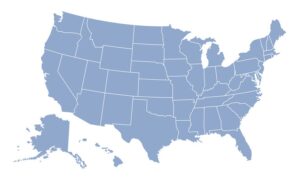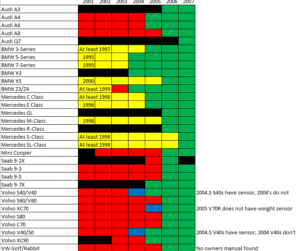Key Regulatory Requirements for ICHRA and QSEHRA

Navigating the regulatory requirements for ICHRA and QSEHRA is essential for businesses seeking compliant, flexible health reimbursement options.
This guide will explain the key rules, obligations, and compliance measures for setting up and managing Individual Coverage HRAs (ICHRAs) and Qualified Small Employer HRAs (QSEHRAs). By understanding these core regulatory elements, businesses can confidently offer employees valuable health benefits while adhering to federal standards.
In this article, you will learn:
The essential regulatory requirements for ICHRA and QSEHRA compliance
Key eligibility criteria for employees under each arrangement
Practical steps for setting up ICHRA and QSEHRA documentation and notices
Let’s explore the foundation of ICHRA and QSEHRA requirements.
Understanding Minimum Participation Requirements for ICHRA and QSEHRA
When setting up health benefits, understanding the regulatory requirements for ICHRA and QSEHRA is critical for ensuring compliance and maximizing the value of these offerings for employees. ICHRA and QSEHRA provide flexibility by allowing businesses to reimburse employees for individual health insurance, eliminating the need for group health plans. However, meeting specific eligibility and participation requirements is essential to take full advantage of these arrangements.
Businesses can confidently offer compliant and effective health reimbursement options by clarifying these requirements.
Ready to explore compliant health benefit solutions? Learn more about ICHRA and QSEHRA with Take Command.
Table of Contents
Introduction
What Is an Individual Coverage HRA (ICHRA)?
What Is Individual Health Insurance Coverage?
Why Offer an ICHRA?
Key Regulatory Requirements for ICHRA
The ICHRA Notice Requirement
How to Set Up ICHRA Plan Documents
ICHRA Eligibility for Employees
How Employee Classes Affect ICHRA Eligibility
Compliance for QSEHRA (Qualified Small Employer HRA)
What Is a QSEHRA?
QSEHRA Employee Requirements
Are QSEHRA Reimbursements Taxable?
How to Substantiate Individual Health Insurance Coverage and Meet Attestation Requirements for ICHRA
Option 1: Provide Proof of Coverage
Option 2: Employee Attestation of Coverage
Affordability Requirements for Applicable Large Employers (ALEs)
Conclusion
Key Takeaways
Understand core regulatory requirements to ensure ICHRA and QSEHRA compliance.
Identify employee eligibility and documentation requirements for effective plan setup.
Learn options for substantiating employee coverage to meet federal standards.
What Is an Individual Coverage HRA (ICHRA)?
An Individual Coverage Health Reimbursement Arrangement (ICHRA) is a flexible health benefits option that allows employers to reimburse employees for individual health insurance premiums and qualified medical expenses rather than offering a traditional group health plan. Introduced in 2020, ICHRA was designed to empower businesses with a customizable, budget-friendly solution that meets varying employee needs while maintaining compliance with federal regulations.
ICHRA offers several advantages:
Customization: Employers can tailor benefits by creating “employee classes” to offer different reimbursement levels for various groups, such as full-time and part-time employees.
Flexibility: Employees can choose the individual health insurance plan that best fits their personal or family health needs.
Tax Benefits: Both employers and employees can enjoy tax advantages, as ICHRA reimbursements are generally tax-free for qualified expenses.
ICHRA distinguishes itself from other Health Reimbursement Arrangements (HRAs) by emphasizing individual coverage. While other HRAs, like Qualified Small Employer HRA (QSEHRA), are also designed to reimburse individual health insurance, ICHRA allows more flexibility with employer classes and contributions.
Offering ICHRA can be a strategic option for businesses of all sizes looking to provide health benefits without managing a traditional group plan. This arrangement allows employers to align health benefits with budgetary goals while providing valuable health options for employees.
Considering ICHRA as a benefits option? Learn how Take Command can simplify your setup and compliance.
What Is Individual Health Insurance Coverage?
Individual health insurance coverage is a type of health plan that employees can purchase independently rather than through an employer-sponsored group plan. This coverage is often acquired through the Health Insurance Marketplace or private insurance providers and includes a range of plan options designed to meet different health and budgetary needs.
Individual health insurance is essential for employees participating in an ICHRA since ICHRA funds can only be used to reimburse premiums and medical expenses for qualified individual health plans. These plans must meet the minimum essential coverage requirements outlined by the Affordable Care Act (ACA), ensuring employees have comprehensive health benefits, such as preventive services, prescription drug coverage, and emergency care.
Individual health insurance offers flexibility and choice, allowing employees to select plans that align with their healthcare needs and financial preferences. This autonomy, combined with the financial support from ICHRA reimbursements, makes individual health insurance an attractive alternative to traditional group health plans.
Why Offer an ICHRA?
Offering an Individual Coverage Health Reimbursement Arrangement (ICHRA) allows businesses to provide health benefits with a high degree of flexibility and control over costs. Unlike traditional group health plans, ICHRA enables employers to set defined monthly contributions, which employees can use to purchase individual health insurance that suits their needs. This model eliminates the complexities of managing a group plan while empowering employees with choice and autonomy in their health coverage.
Here are some key pros and cons of offering an ICHRA:
Pros of Offering ICHRA:
Cost Control: Employers can set a fixed budget for health benefits, making expenses more predictable and manageable.
Flexibility in Plan Design: With the option to create employee classes, employers can vary contribution levels based on factors like job role or geographic location.
Increased Employee Choice: Employees can choose a health plan that best fits their health needs and circumstances.
Tax Advantages: ICHRA reimbursements are generally tax-free for employers and employees when used for qualified expenses, providing added financial benefits.
Cons of Offering ICHRA:
Administrative Complexity: Setting up and managing an ICHRA requires understanding regulatory requirements and proper documentation.
Employee Education Needs: Employees may need guidance to understand and navigate individual health insurance marketplaces.
Market Availability: In some regions, individual health plan options may be limited, affecting employee experience.
By offering an ICHRA, businesses can provide health benefits that are cost-effective and flexible, aligning well with a wide range of workforce needs. This approach is an appealing alternative for companies seeking to simplify health benefits while offering employees valuable choices.
The ICHRA Notice Requirement
To comply with federal regulations, employers offering an ICHRA must provide a formal notice to eligible employees before the start of each plan year. This notice informs employees about the ICHRA’s details, ensuring they understand the arrangement, eligibility, and options for individual health coverage enrollment.
The notice must be delivered at least 90 days before the start of the ICHRA plan year or, for new employees, on or before their first day of eligibility. This timeline allows employees enough time to review their health insurance options, make informed decisions, and prepare for any changes.
ICHRA Notices Must Include the Following:
Description of the ICHRA – An overview of the arrangement, including how it works and what expenses are eligible for reimbursement.
Eligibility Criteria – Details on eligible employees based on factors like employment status or employee class.
Reimbursement Amount – Information on the monthly contribution amount employees can expect.
Individual Coverage Requirement – An explanation that employees must maintain qualified individual health insurance to receive reimbursements.
Tax Implications – Information on the tax-free nature of reimbursements when used for qualifying health expenses.
Marketplace Enrollment Guidance – Instructions on where to obtain individual health coverage, often through the Health Insurance Marketplace.
Special Enrollment Rights – Information on how ICHRA affects special enrollment periods for individual health plans.
Providing this notice is a crucial compliance step that ensures employees are fully informed and able to make the best decisions regarding their health coverage options.
How to Set Up ICHRA Plan Documents
Setting up ICHRA plan documents is critical for ensuring compliance with federal regulations and clearly outlining the employer’s and employees’ rules and expectations. These documents detail the specifics of the ICHRA arrangement, including eligibility, reimbursement processes, and required employee responsibilities. Proper documentation supports legal compliance and helps employees understand how the plan works.
When creating ICHRA plan documents, include the following essential elements:
Eligibility Requirements – Outline which employees are eligible for ICHRA, specifying categories based on full-time, part-time, seasonal, or other classifications defined by the employer.
Contribution Amounts – Specify the monthly or annual contribution amount to each eligible employee class, allowing for transparency and consistency.
Reimbursable Expenses – Detail which health insurance premiums and medical expenses are eligible for reimbursement, including any restrictions or exclusions.
Claims Process – Explain the steps employees must follow to submit reimbursement requests, including documentation needed and timelines for submission.
Proof of Coverage Requirement – Describe the requirement for employees to show proof of individual health insurance to qualify for reimbursements, aligning with federal regulations.
Tax Information – Include an overview of the tax-free nature of ICHRA reimbursements and any relevant tax obligations employees might have.
Legal Disclosures—Add any legal disclaimers or disclosures required by the IRS or Department of Labor to ensure compliance with applicable laws.
Setting up comprehensive ICHRA plan documents helps ensure that both the business and employees understand their roles, responsibilities, and the arrangement’s benefits. Proper documentation provides a foundation for a compliant and well-functioning ICHRA.
ICHRA Eligibility for Employees
Determining employee eligibility is key to setting up an Individual Coverage Health Reimbursement Arrangement (ICHRA). Federal regulations allow employers to define eligibility based on specific employee classes, which helps tailor the arrangement to fit diverse workforce needs. By setting clear eligibility criteria, businesses ensure compliance while providing accessible benefits aligned with organizational goals.
Standard eligibility criteria for ICHRA include:
Employment Status – Employers can specify full-time, part-time, or seasonal employees as eligible groups. This flexibility enables businesses to adjust benefits based on hours worked and employment terms.
Employee Classes—ICHRA regulations permit dividing employees into salaried, hourly, or temporary worker classes. Each class can have different contribution levels, making it easier to offer customized benefits.
Geographic Location – Employers may offer ICHRA to employees working in specific locations, which can account for regional cost variations in individual health plans.
New vs. Existing Employees—Depending on strategic priorities, Employers can offer ICHRA to new hires while excluding existing employees or vice versa.
Union Membership – Union and non-union employees can be placed into separate classes, respecting collective bargaining agreements.
Setting eligibility criteria allows employers to structure ICHRA to fit business needs and workforce composition. Properly defining these criteria ensures that employees receive fair and consistent benefits, supporting employee satisfaction and regulatory compliance.
How Employee Classes Affect ICHRA Eligibility
One of the distinctive features of an ICHRA is the ability for employers to define “employee classes.” This flexibility allows businesses to offer tailored health benefits catering to different workforce groups. By categorizing employees into classes, employers can control ICHRA offerings based on factors such as job role, employment status, or location, all while staying compliant with regulatory requirements.
Here are some commonly used employee classes in ICHRA:
Full-Time and Part-Time Employees – Employers can create separate benefit levels for full-time and part-time employees, adjusting reimbursement contributions according to the hours employees work.
Salaried vs. Hourly Employees—Businesses can define classes based on pay type, with separate ICHRA contributions for salaried employees and hourly wage earners.
Seasonal Employees—ICHRA allows for a seasonal employee class, which can benefit businesses with a workforce that varies based on seasonal demand.
Geographic Location – Employees working in different geographic locations, such as different states, can receive varying contribution amounts to account for the cost differences in health insurance markets.
Union vs. Non-Union Employees – For businesses with unionized workers, union and non-union employees can be assigned to different classes, ensuring that ICHRA offerings respect union agreements.
Temporary Employees – Temporary or contract workers can also be designated as a separate class, allowing employers to offer adjusted benefit levels as needed.
Each employee class must be assigned a consistent contribution level within that class to maintain compliance. Employee classes help employers strategically design health benefits that meet diverse needs across the workforce, supporting accessibility and equity while controlling costs.
How to Confirm Individual Health Insurance Coverage and Meet ICHRA Verification Requirements
To comply with ICHRA regulations, employees must have individual health insurance coverage to qualify for reimbursements. Employers are responsible for verifying this coverage, which can be done through two main methods: obtaining proof of coverage or collecting an attestation from the employee. These verification steps help businesses maintain compliance while ensuring that ICHRA funds are used appropriately.
Option 1: Provide Proof of Coverage
Employees can submit official documentation as proof of individual health insurance coverage. Acceptable forms of proof may include:
Insurance Card – A copy of the insurance card showing the policyholder’s name and coverage details.
Premium Statement – A recent statement or receipt showing monthly premium payments confirms active coverage.
Insurance Policy Documents – A copy of the policy or enrollment confirmation from the insurance provider.
Employers should maintain a secure system for collecting and storing these documents to protect employee privacy and ensure compliance with data protection laws. Proof of coverage must be updated periodically to confirm ongoing eligibility for ICHRA reimbursements.
Option 2: Employee Proof of Coverage
In addition to or instead of physical proof, employers can require employees to complete an official verification confirming their individual health insurance status. This process involves the employee providing a written statement verifying they have qualifying coverage, without necessarily submitting specific documentation.
An employee verification should include:
Employee Signature – The employee’s signed declaration that they are covered by individual health insurance.
Coverage Start Date – The date their health insurance coverage began, ensuring it aligns with the ICHRA reimbursement period.
Certification of Continued Coverage – A statement affirming that the employee will maintain the required insurance to qualify for ICHRA funds.
This offers a simpler verification process, reducing administrative burdens for both employers and employees. However, some employers may choose to request documentation to ensure compliance periodically.
These methods for substantiating coverage allow employers to meet federal requirements, maintain accountability, and ensure that ICHRA benefits are directed to eligible employees who maintain qualifying insurance.
Affordability Requirements for Applicable Large Employers (ALEs)
For Applicable Large Employers (ALEs) – businesses with 50 or more full-time employees – the IRS mandates that health benefits must be “affordable” under the Affordable Care Act (ACA). This affordability requirement extends to ICHRAs, ensuring employers offer health benefits that meet federal standards for cost to avoid potential penalties.
Defining “Affordability” in ICHRA
In the context of an ICHRA, affordability is determined by comparing the employee’s required contribution for a self-only individual health insurance plan (available through the Marketplace) against a percentage of the employee’s household income. For 2024, the affordability threshold is 8.39% of an employee’s household income. If an employee’s required premium contribution is below this percentage after the ICHRA reimbursement, the ICHRA is considered affordable.
Calculating Affordability: Example
To help clarify affordability, consider the following example:
Employee’s Household Income: $40,000 annually
Affordability Threshold (9.02% for 2025): $3,608 annually or about $301 monthly
For this ICHRA to be affordable, the employee’s out-of-pocket premium (after the ICHRA contribution) must not exceed $301 per month for a self-only plan. Employers can use safe harbors, such as the federal poverty level, W-2 wages, or pay rate, to simplify these calculations, which helps ensure affordability across different income levels and employee situations.
Ensuring Compliance with Affordability Requirements
To meet affordability requirements, employers can:
Adjust ICHRA Contribution Levels – Offer a higher ICHRA reimbursement to lower-income employees to ensure their premiums remain affordable.
Utilize Safe Harbor Calculations – Use IRS safe harbors as reference points for determining affordability, reducing administrative complexity, and maintaining compliance.
Monitor Marketplace Premium Rates – Periodically review individual health plan rates in the Marketplace to adjust ICHRA contributions as needed to meet affordability standards.
Meeting affordability requirements is crucial for ALEs to avoid penalties under the ACA’s Employer Mandate. By ensuring ICHRA affordability, businesses can provide accessible health benefits that align with federal standards, supporting employees in securing quality individual health coverage.
Key Regulatory Requirements for ICHRA and QSEHRA Compliance
Understanding the regulatory requirements for ICHRA and QSEHRA is essential for any business looking to offer flexible, compliant health benefits to its workforce. By carefully defining eligibility, preparing thorough plan documents, and ensuring employees meet coverage and affordability requirements, employers can maximize the advantages of ICHRA and QSEHRA while maintaining compliance with federal standards.
To summarize, this guide covered:
The key regulatory requirements for setting up ICHRA and QSEHRA include notice and documentation needs.
How to define employee eligibility and use employee classes to tailor benefits while ensuring regulatory adherence.
The methods for substantiating employee health coverage and meeting affordability requirements for Applicable Large Employers.
By understanding and implementing these regulatory requirements, businesses can confidently leverage ICHRA and QSEHRA as effective, cost-controllable health benefit options. For companies interested in optimizing their health benefit offerings further, exploring deeper insights into IRS reporting requirements or developing compliance checklists can be valuable next steps.




